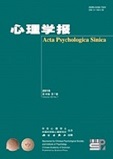The positive psychological construct of gratitude is crucial for health and well-being. Previous studies have shown a significant positive correlation between gratitude and social well-being. However, to the best of our knowledge, no studies have examined this potentially reciprocal relationship from a longitudinal perspective. According to the broaden-and-build theory and gratitude amplification theory, we hypothesized that gratitude has a predictive effect on social well-being. In addition, based on the personality and social relationships model and self-determination theory, we proposed that social well-being is an antecedent to gratitude. In summary, this research combines a longitudinal study and a daily diary investigation to systematically explore the causal relation between gratitude and social well-being.
Study 1 employs a two-wave cross-lagged design to explore the long-term relationship between trait gratitude and social well-being. The sample comprised 563 undergraduate students, who all participated online. Pursuant to the study purpose, participants were asked to complete the gratitude and social well-being scales twice, separated by a seven-month interval. The cross-lagged path analysis suggested reciprocal effects between trait gratitude and social well-being. To reduce recall bias and explore the short-term association between gratitude and social well-being, Study 2 employs a daily diary method. A total of 274 young adults completed daily gratitude and social well-being measures for 21 consecutive days.
In Study 1, trait gratitude at T1 significantly positively predicted social well-being at T2, while social well-being at T1 also significantly predicted trait gratitude at T2. These effects remained significant after controlling for age and gender. Consistent with Study 1, Study 2 also revealed a reciprocal relationship: state gratitude on one day positively predicted social well-being the next day, while social well-being on one day also positively predicted state gratitude the next day. Moreover, these relationships were stable after controlling for time trends. Overall, the results of Study 1 and Study 2 support the hypotheses by showing reciprocal predictive effects between gratitude and social well-being.
In summary, we predicted that experiencing gratitude would lead to higher social well-being, which would, in turn, result in higher gratitude, activating an upward spiral. This work deepens understanding of the interaction between gratitude and social well-being, paving the way for future intervention research to help increase both.




